Gothic Cathedral 2nd exam
1/63
There's no tags or description
Looks like no tags are added yet.
Name | Mastery | Learn | Test | Matching | Spaced |
|---|
No study sessions yet.
64 Terms
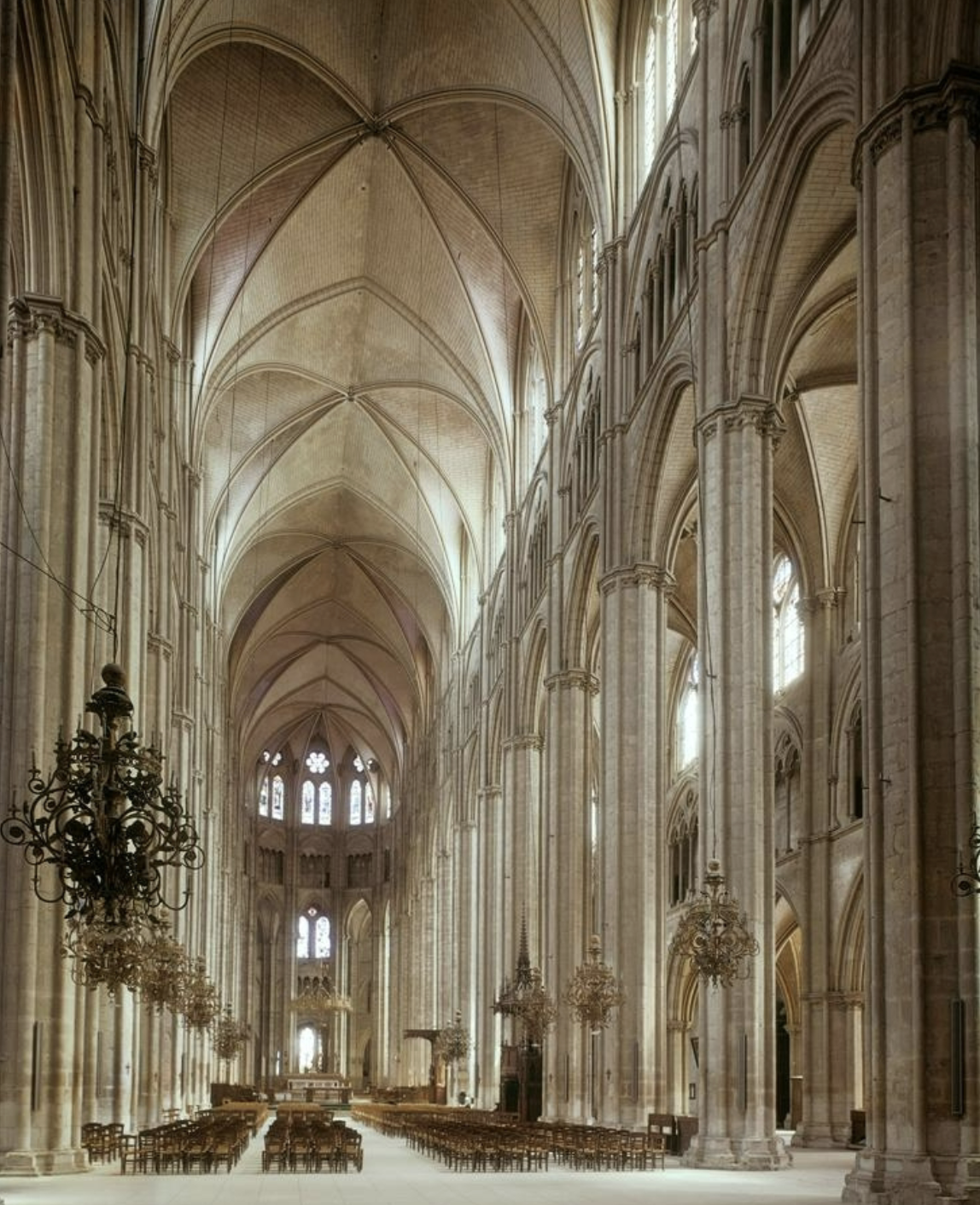
Bourges, Cathedral of Saint-Étienne, begun 1195, choir ca. 1200, dedicated 1214, view of interior towards apse
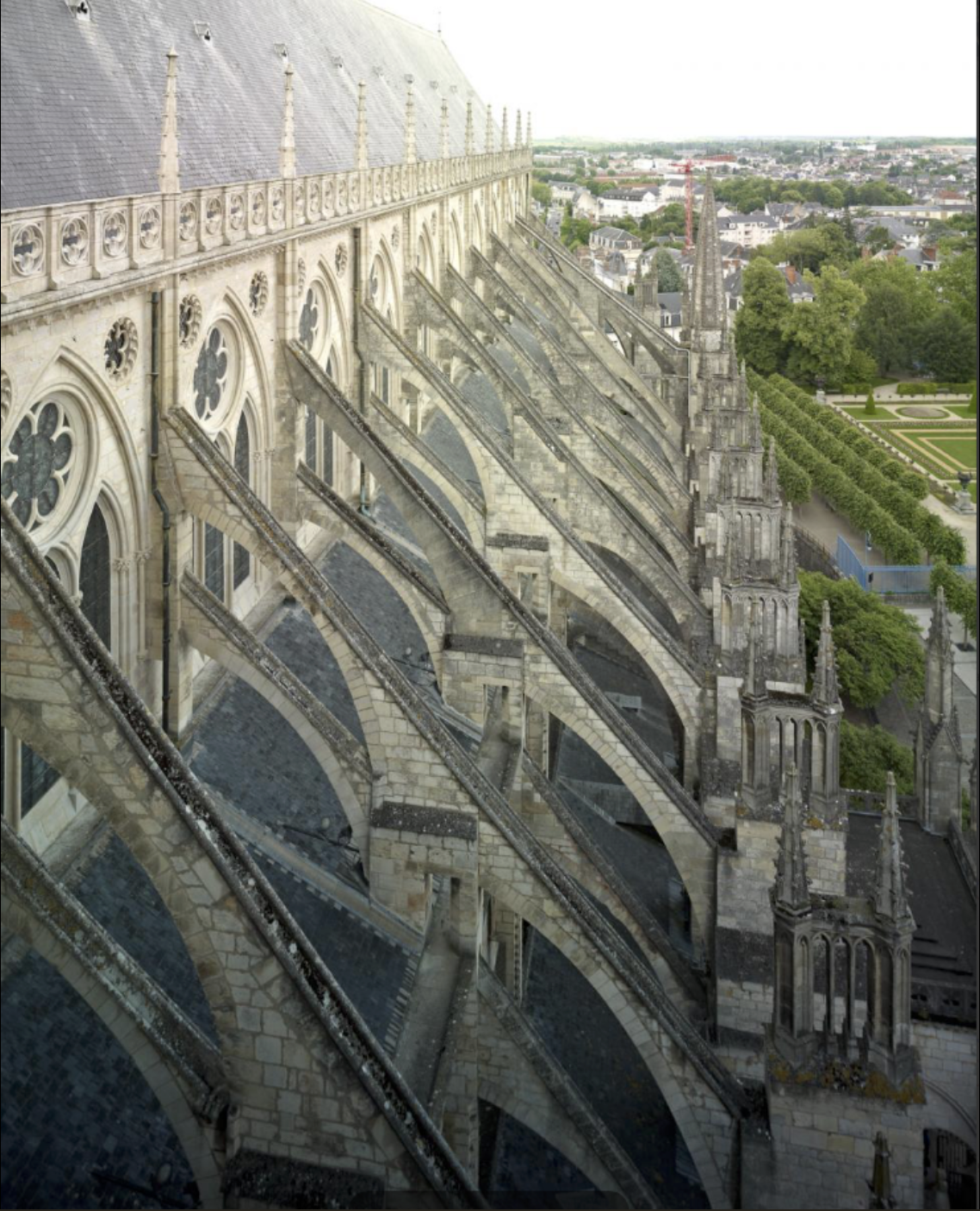
Bourges, Cathedral of Saint-Étienne, begun 1195, choir ca. 1200, dedicated 1214, view of exterior of nave
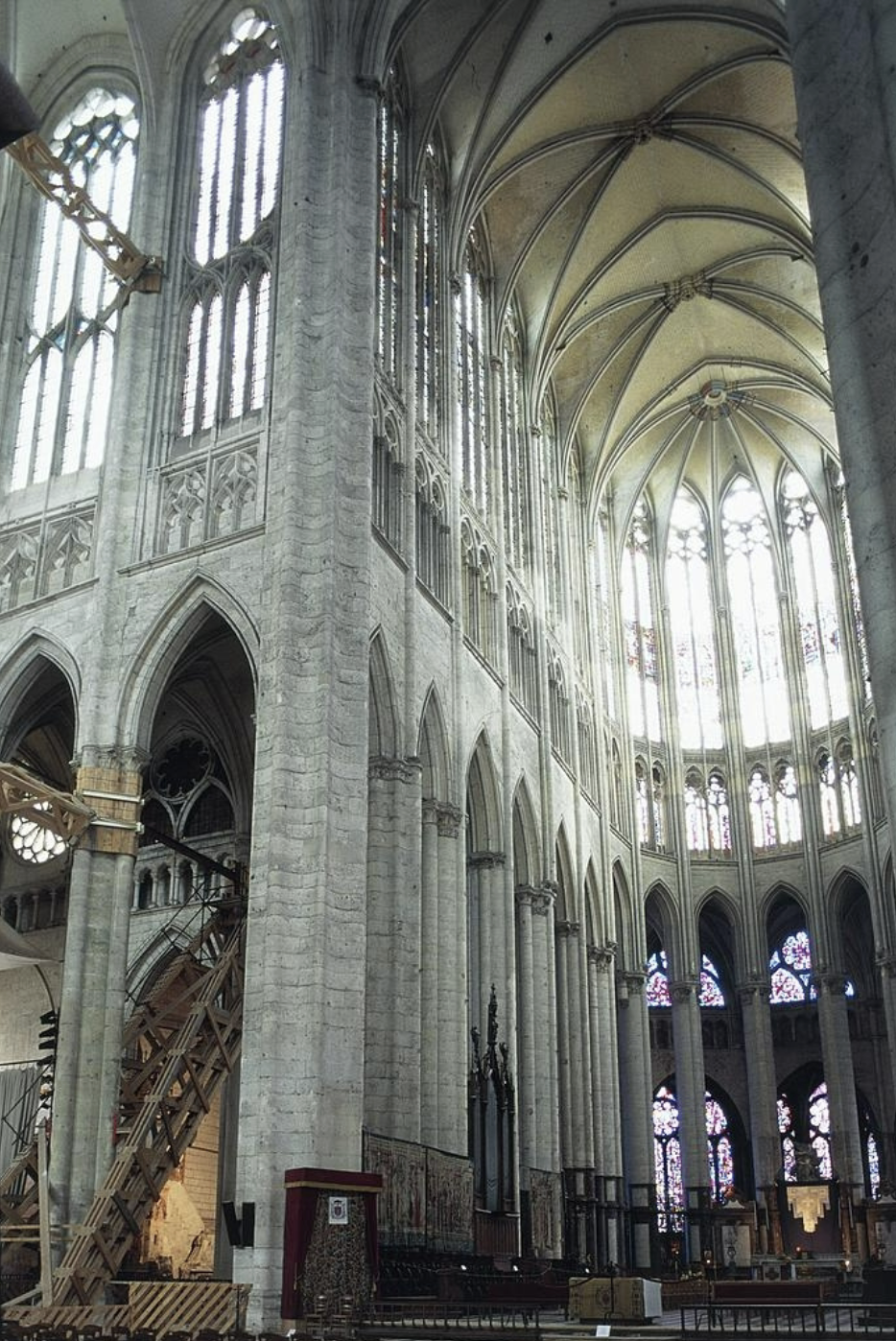
Beauvais, Cathedral of Saint-Pierre, first rebuilt 1225-1271 (tower 16th century), view of interior choir and part of north transept
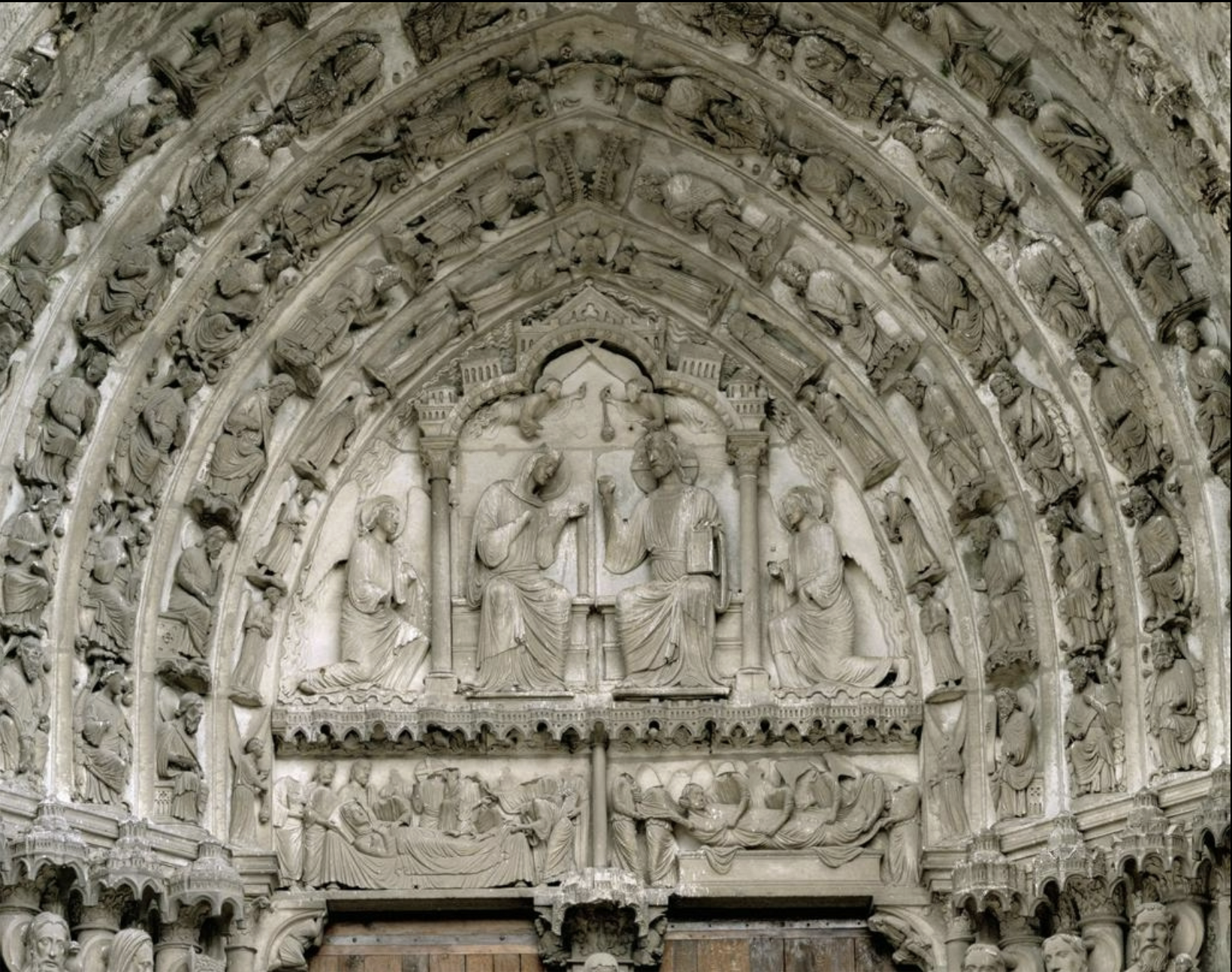
Chartres, Cathedral of Notre Dame, North Transept portal center tympanum and trumeau, ca. 1204+
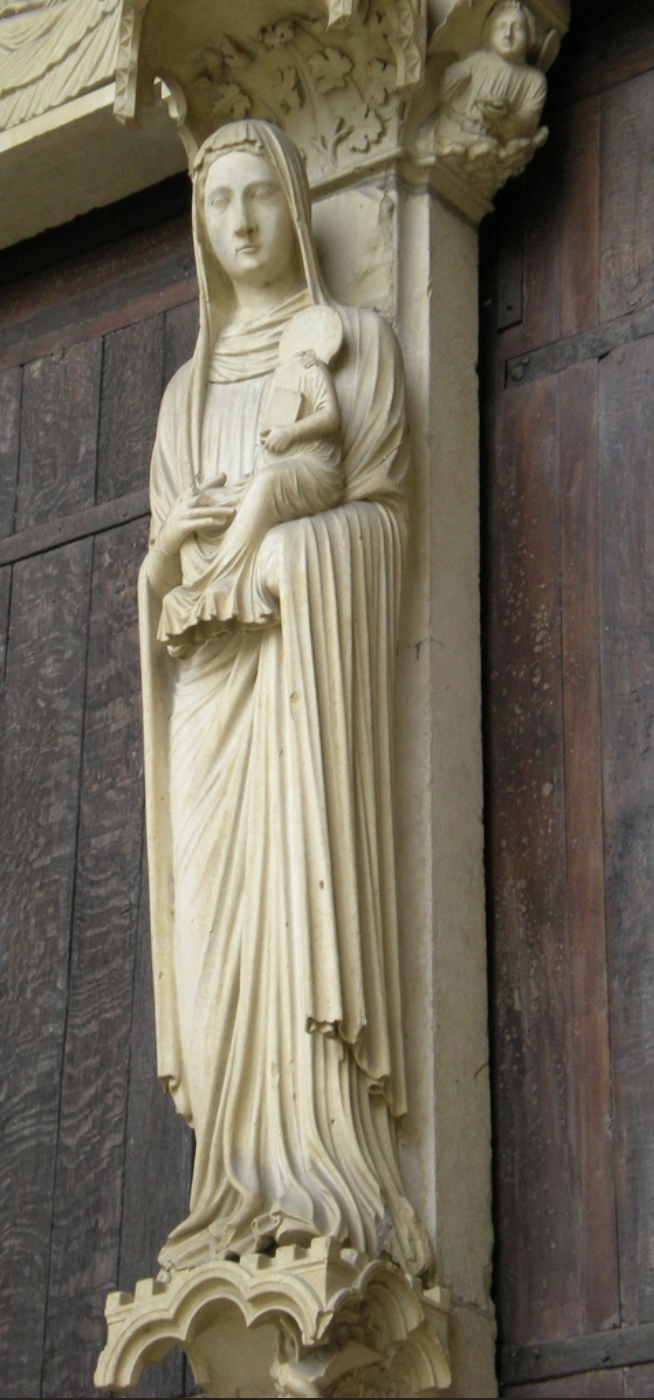
Chartres, Cathedral of Notre Dame, North Transept portal center tympanum and trumeau, ca. 1204+
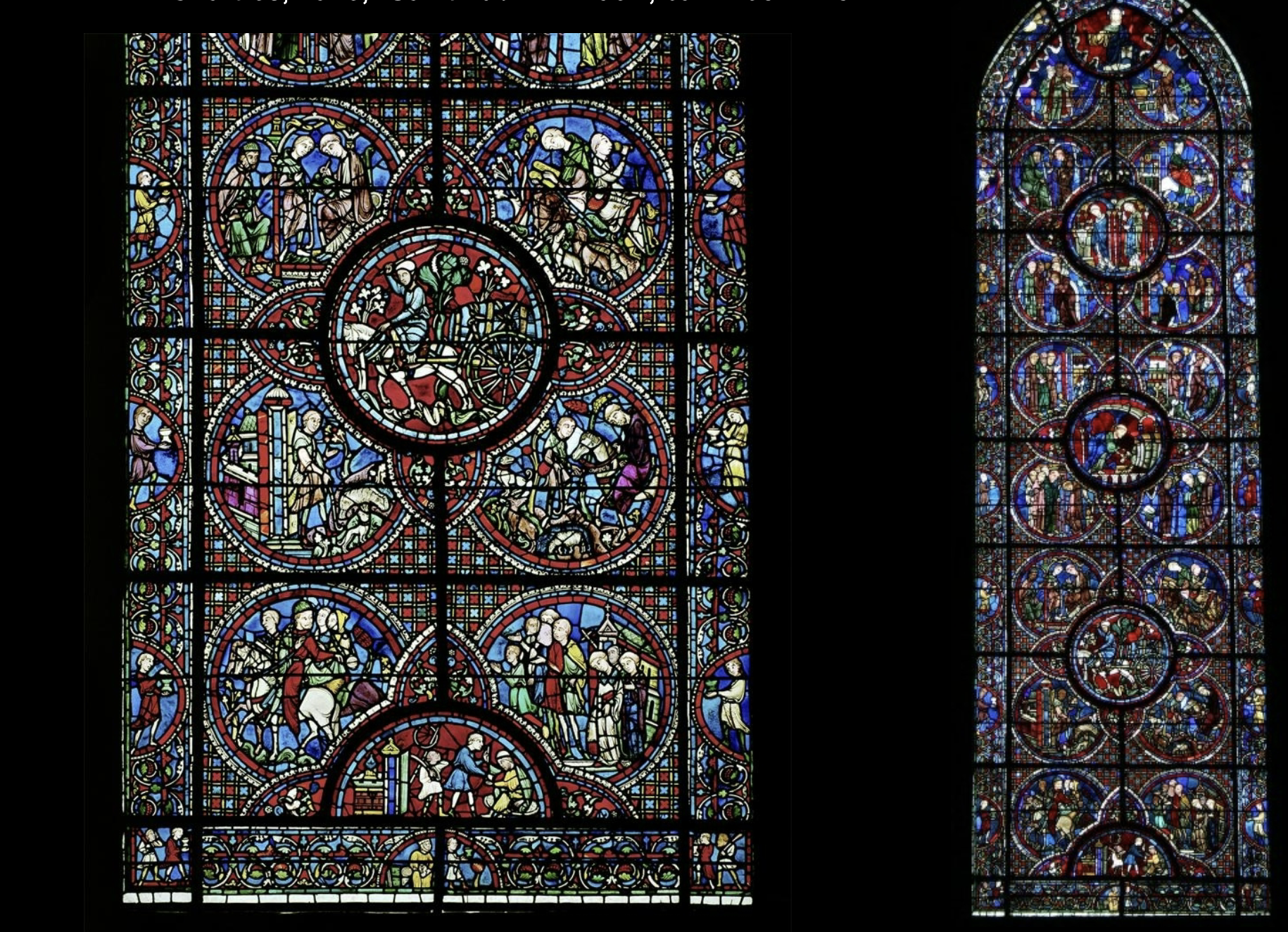
Chartres, Cathedral of Notre Dame, ca. 1204+, Apostles and Saint Lubin windows from nave ca. 1205-1215
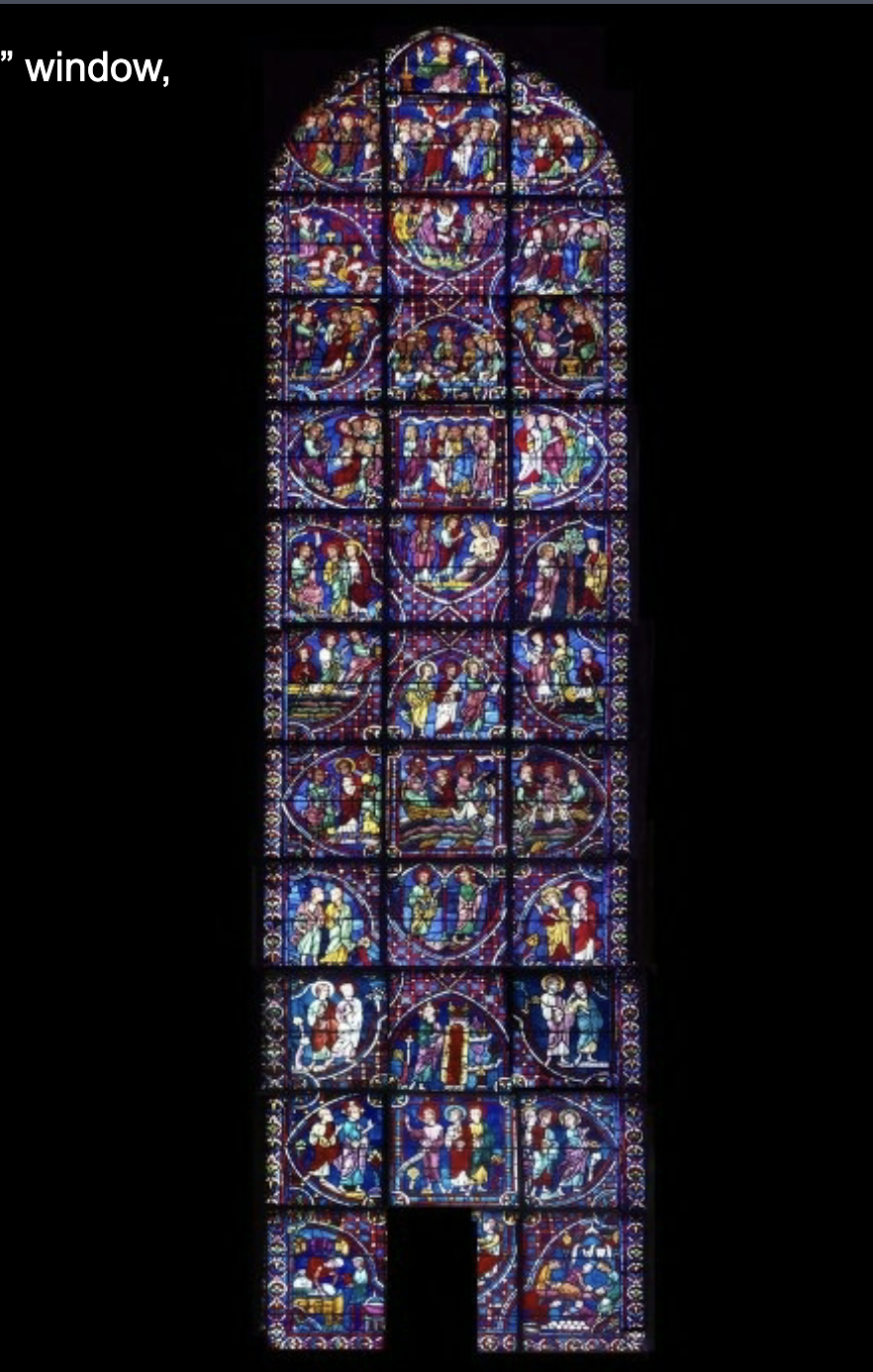
Chartres, Cathedral of Notre Dame, Apostles and Saint Lubin windows from nave ca. 1205-1215
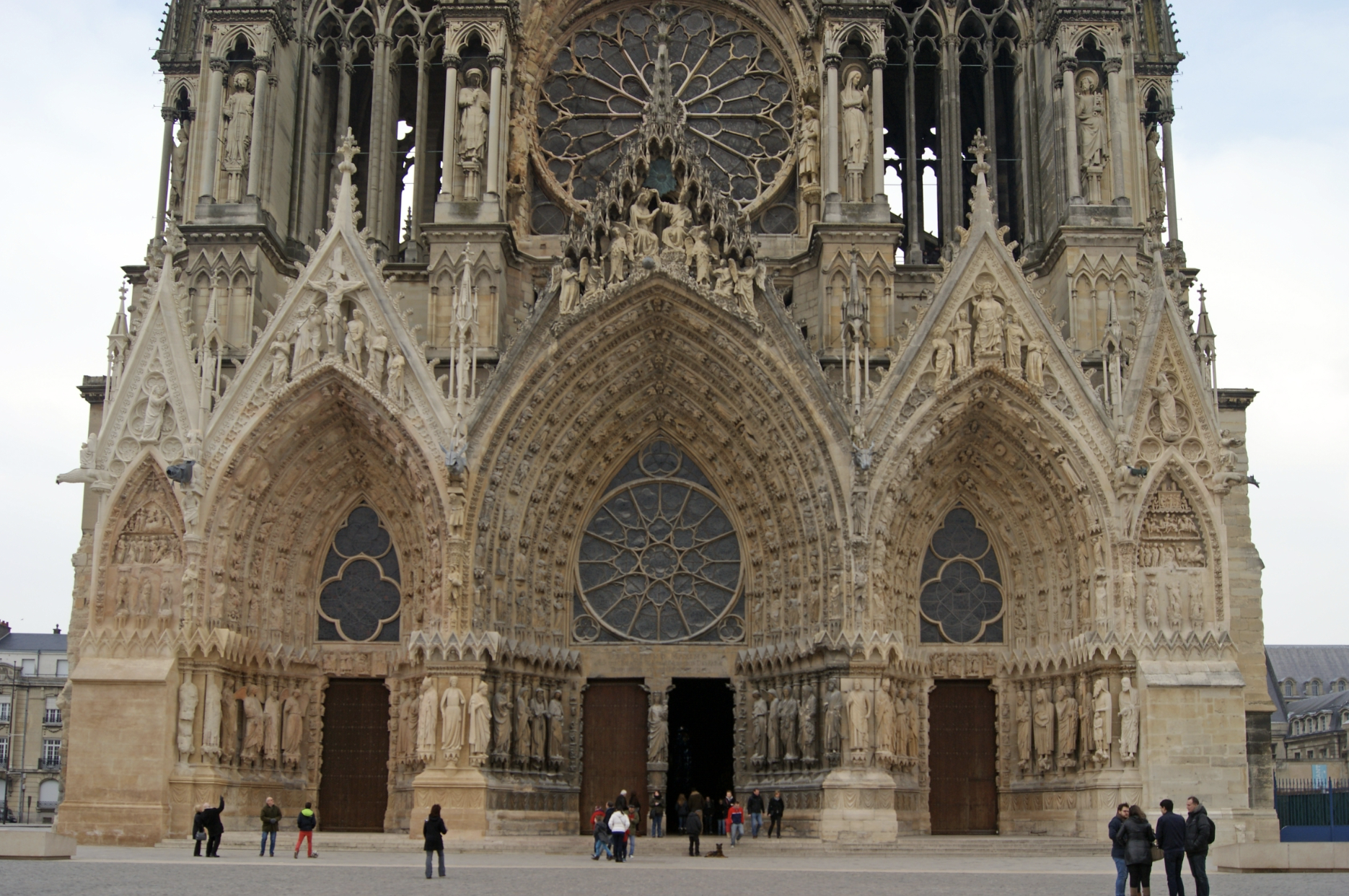
Reims, Cathedral of Notre Dame, ca. 1210+, North Transept portal middle portal with martyrdom of Saint Nicaise

Reims, Cathedral of Notre Dame, ca. 1210+, façade sculptures of Annunciation and Visitation, 1252-1275
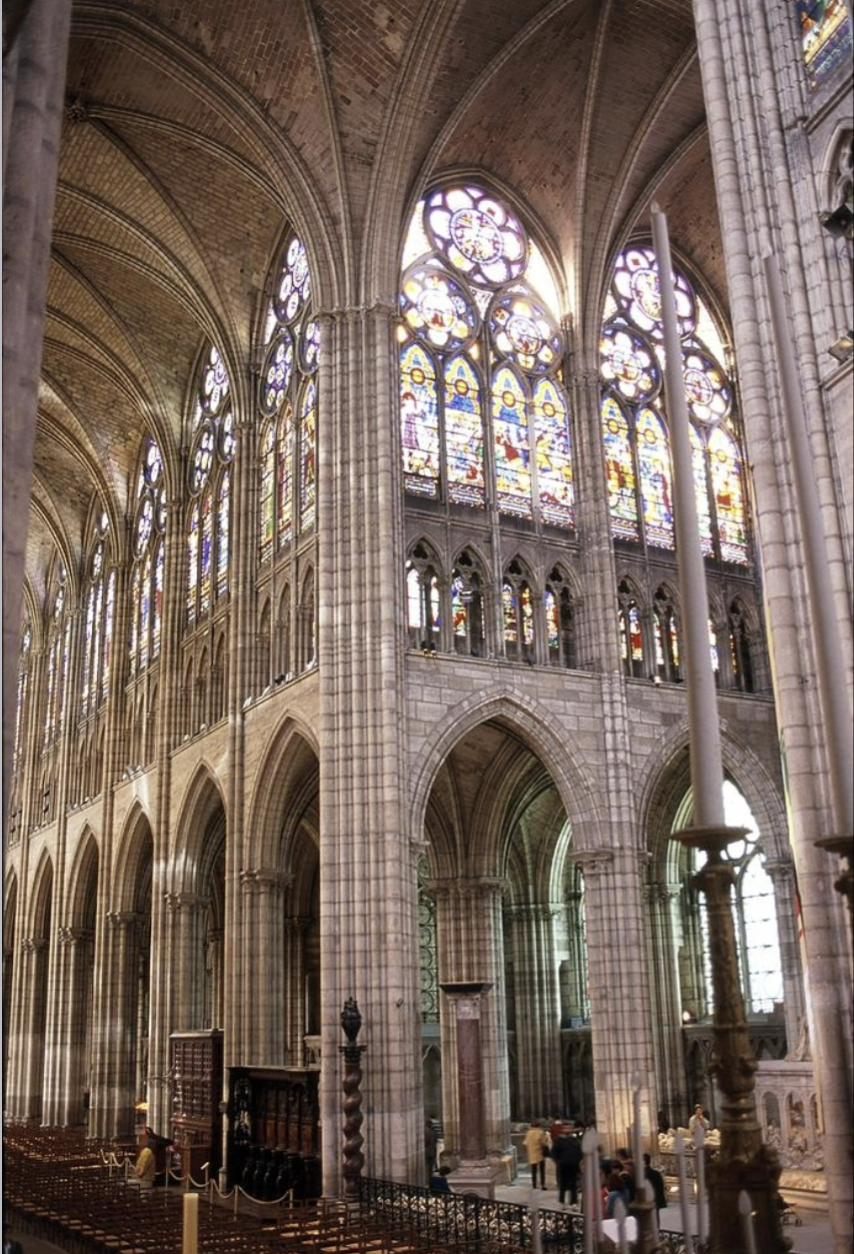
Saint Denis, nave and upper choir ca. 1231+, Powerpoint 12, slide 6
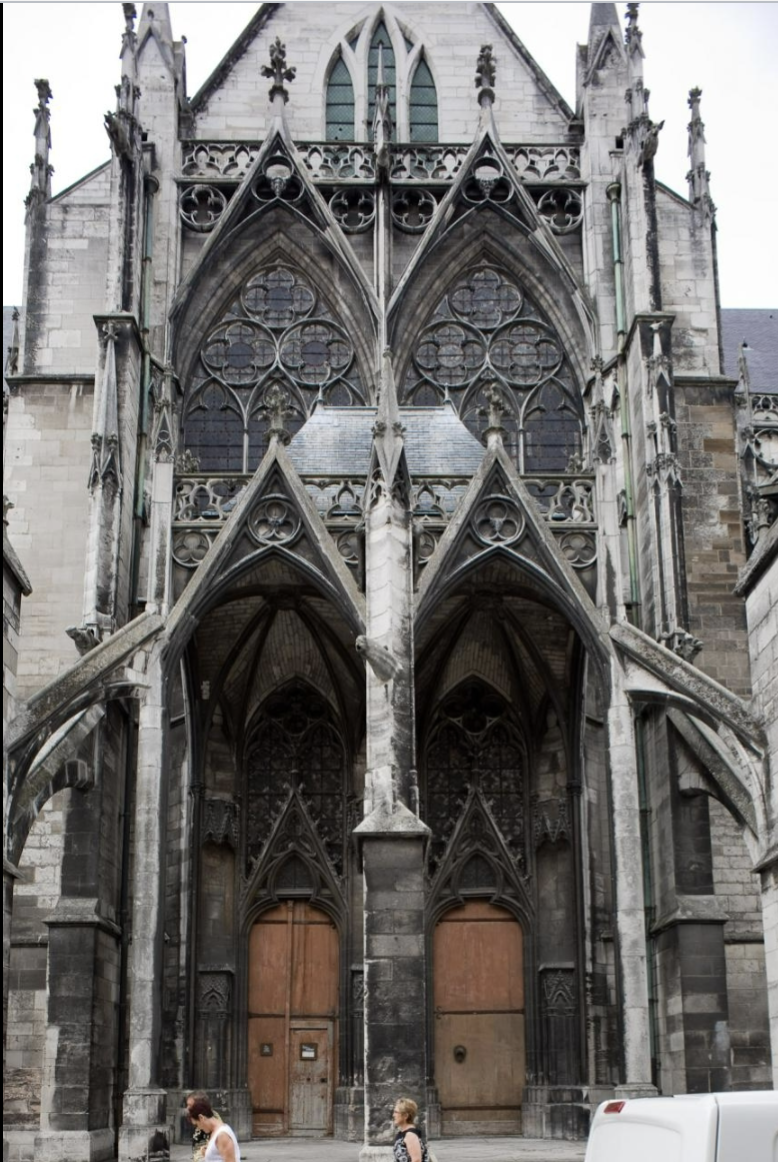
Troyes, Collegiate Church of Saint Urbain, exterior view of transept, 1262-66
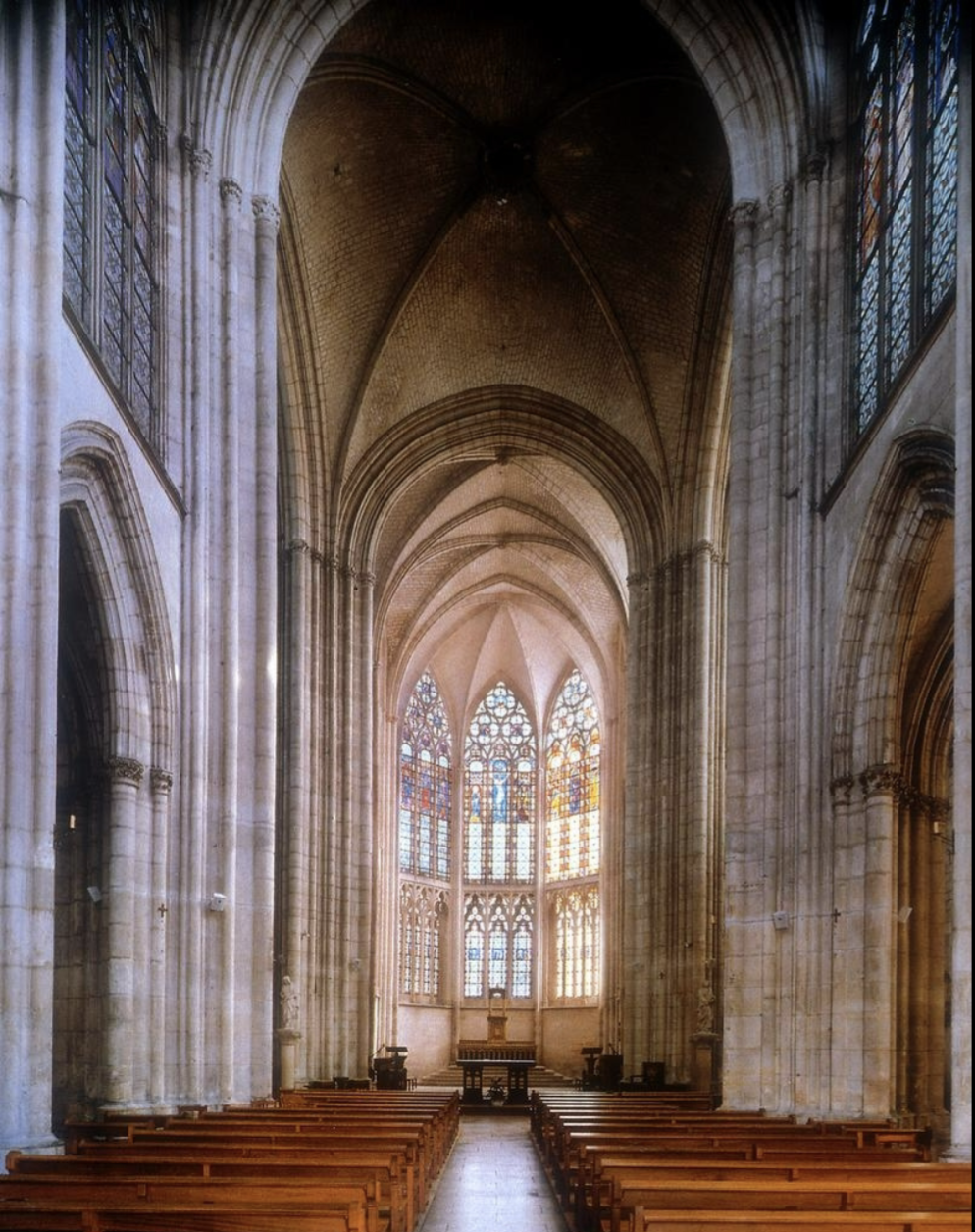
Troyes, Collegiate Church of Saint Urbain, view of interior nave towards apse, 1262-66
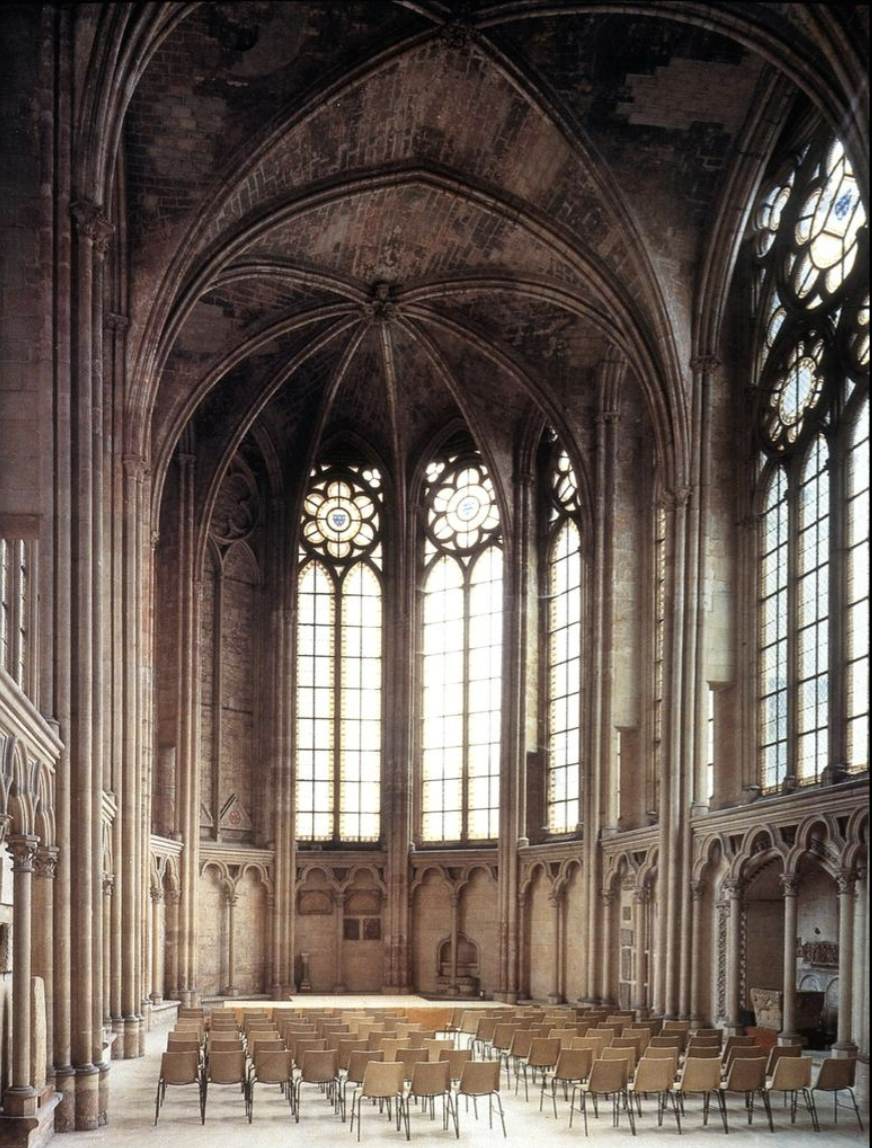
Chapel of Saint-Germain-en-Laye, view of interior towards apse, ca. 1230-1238
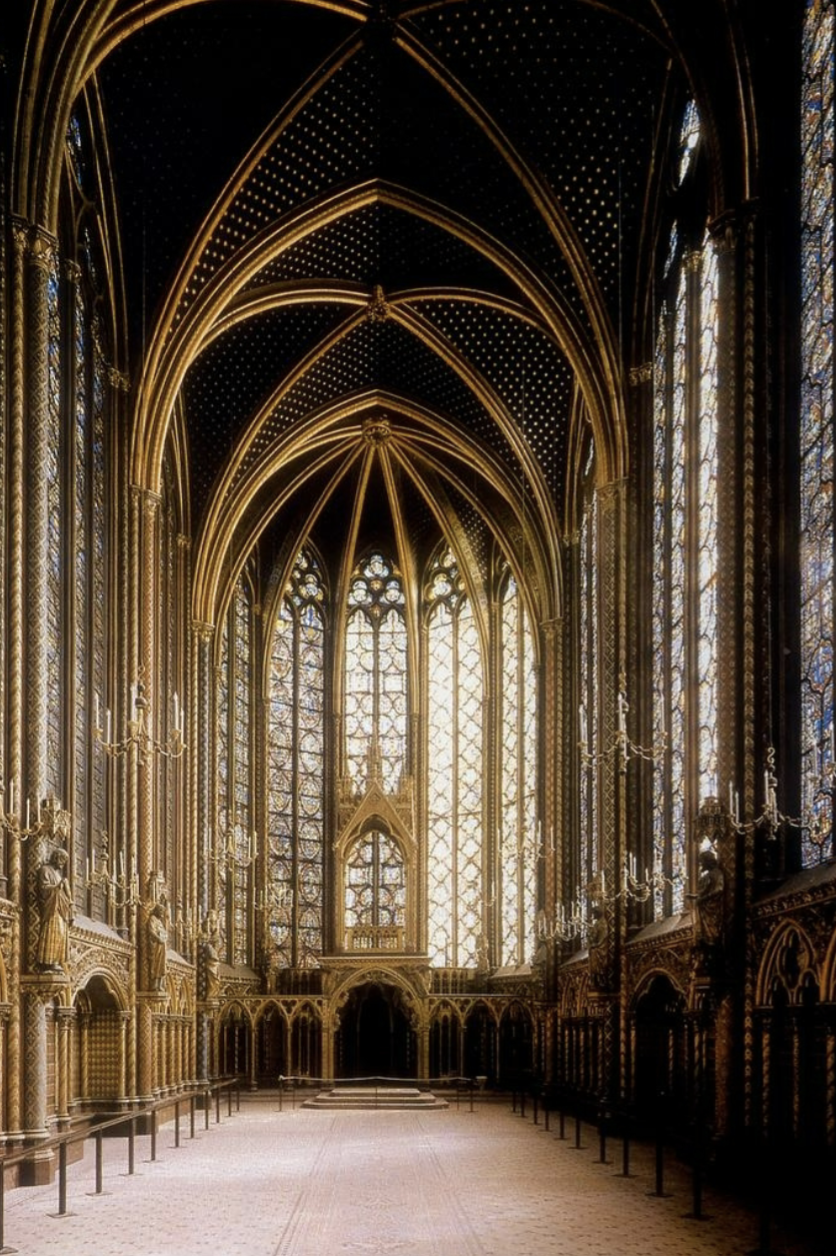
Paris, Sainte-Chapelle, interior view of upper chapel nave towards apse, 1244-1248
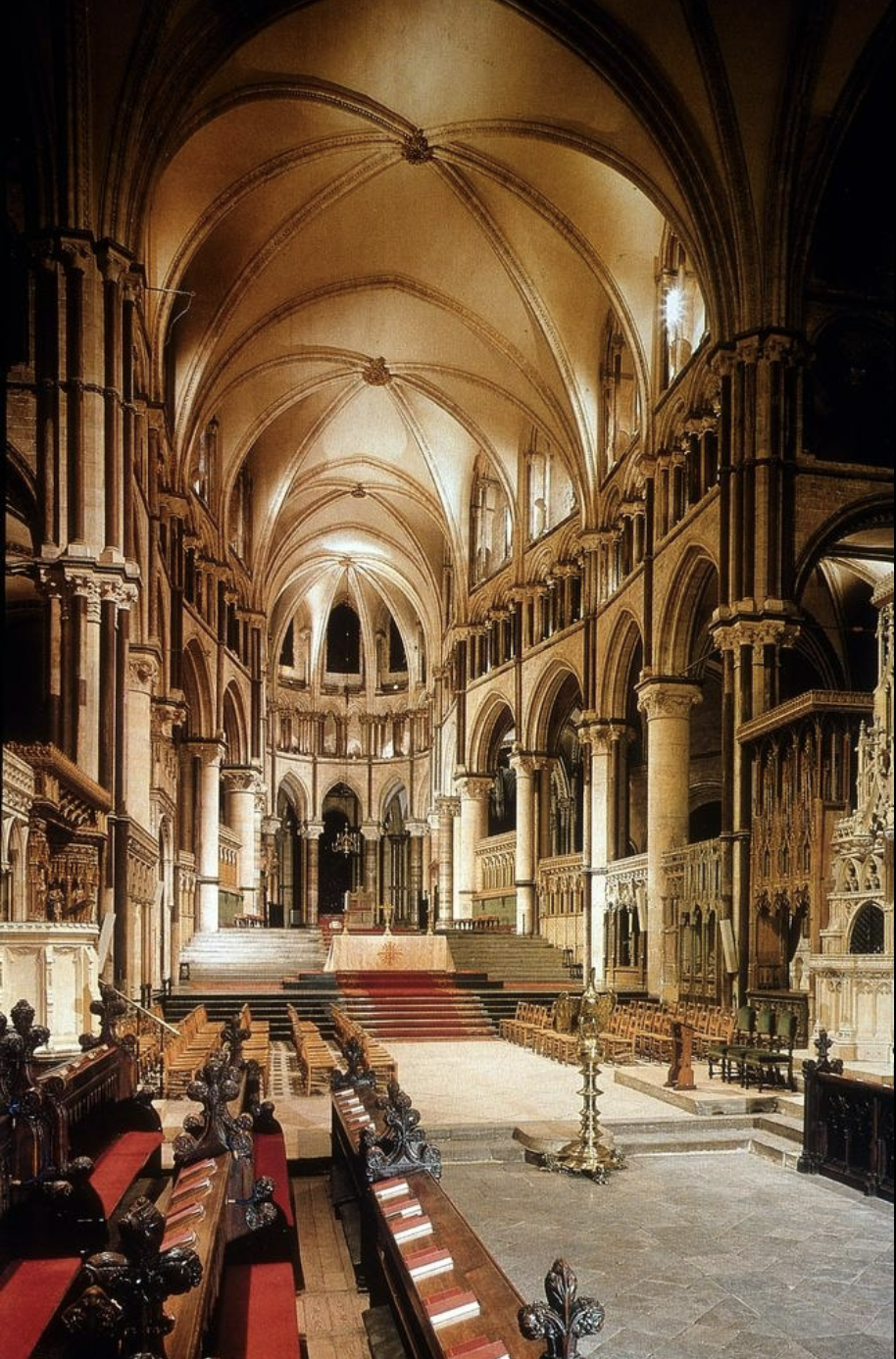
Canterbury, Christ Church Cathedral, view of choir, 1174+

Canterbury, Christ Church Cathedral, interior view of Corona rebuilt 1174+
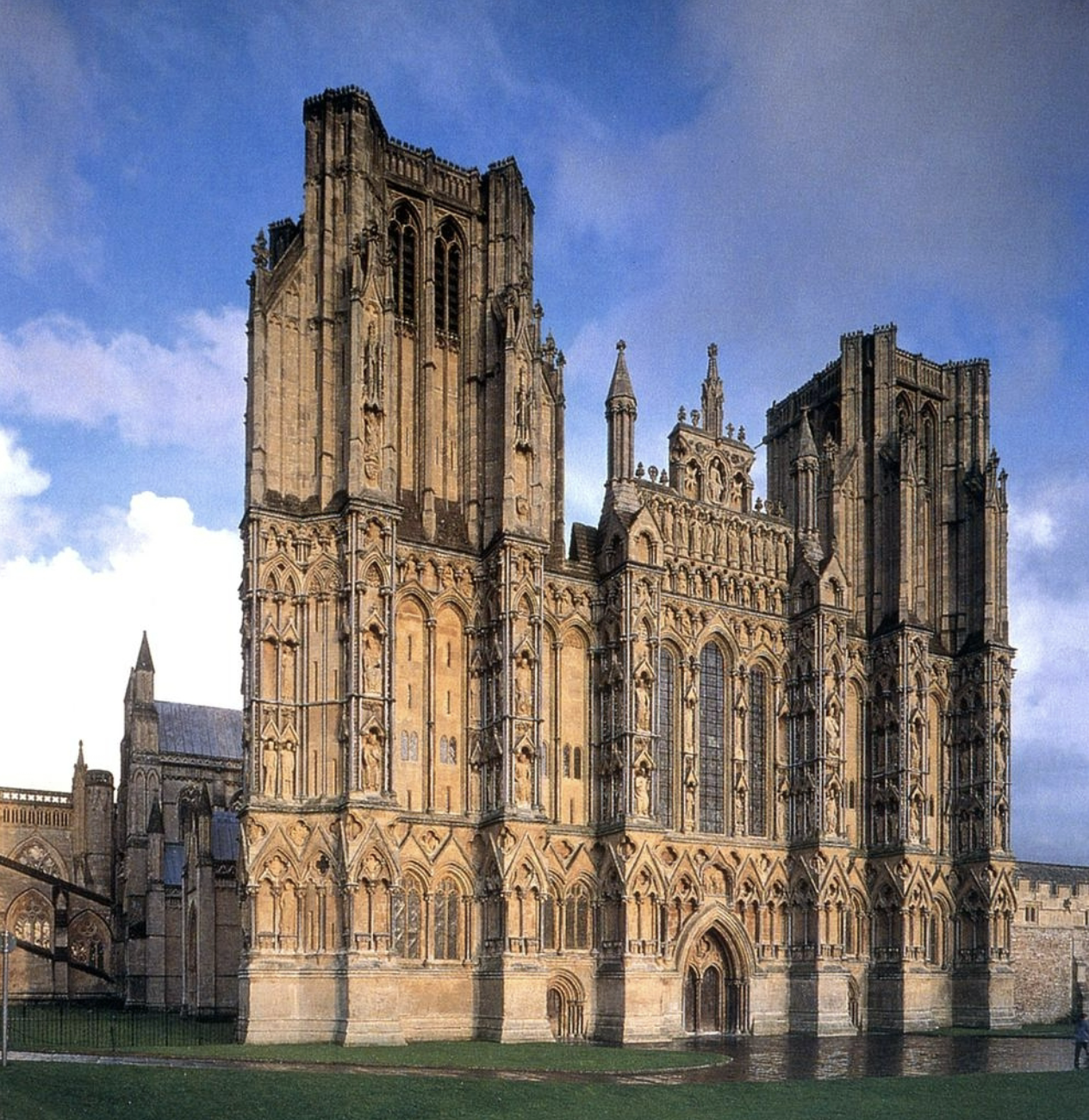
Wells, Cathedral of Saint Andrew, exterior view of façade, ca. 1230-1240
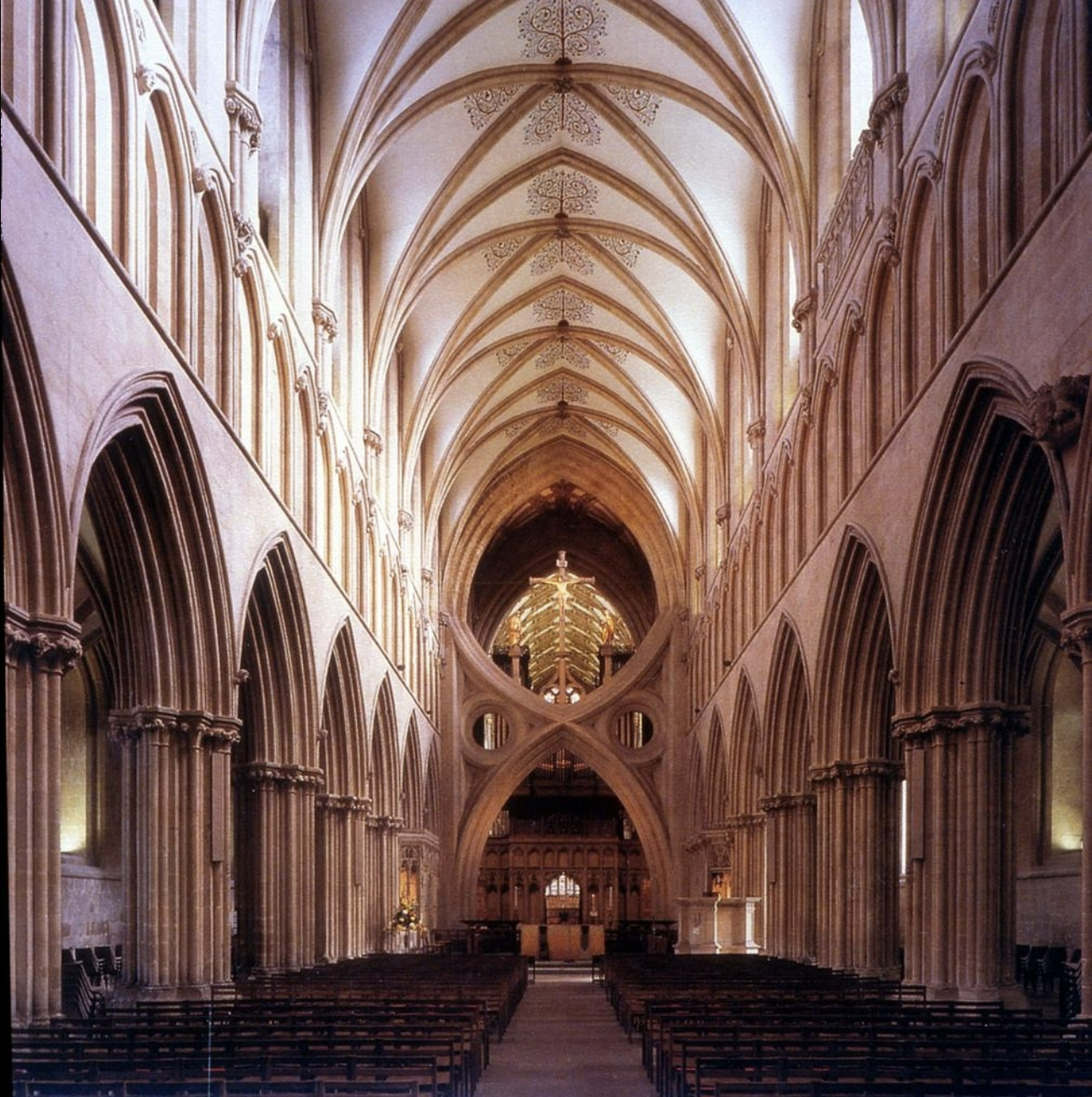
Wells, Cathedral of Saint Andrew, interior view of nave, rebuilt 1180+
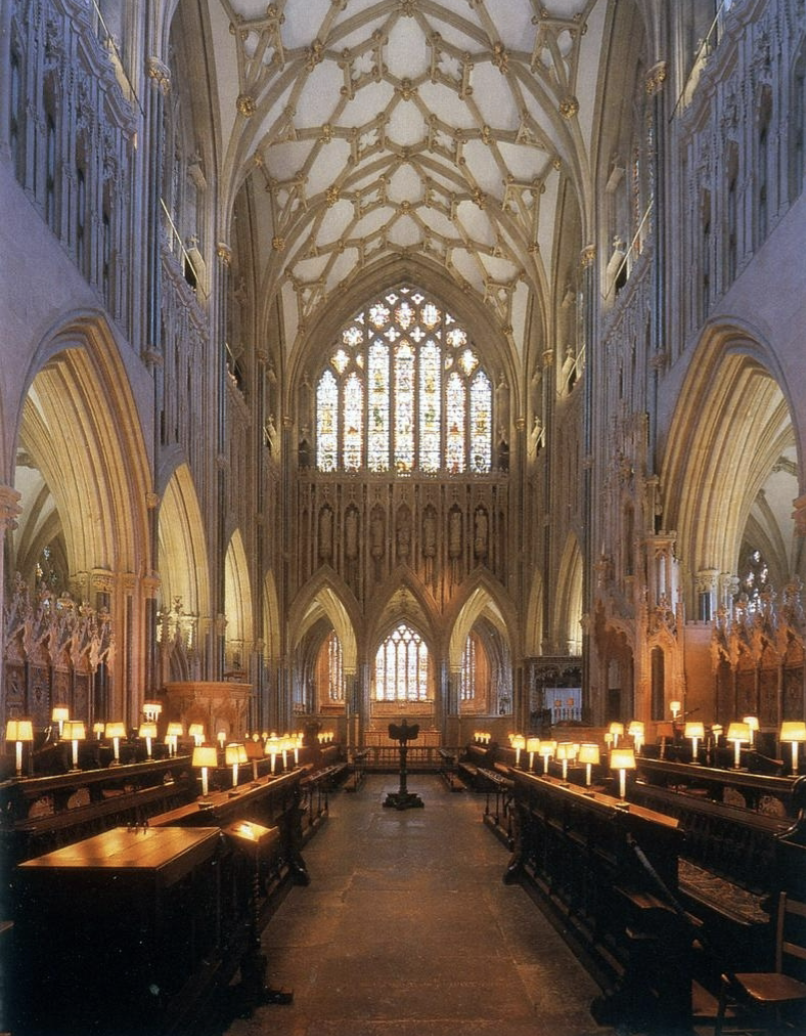
Wells, Cathedral of Saint Andrew, choir, rebuilt ca. 1333-40,
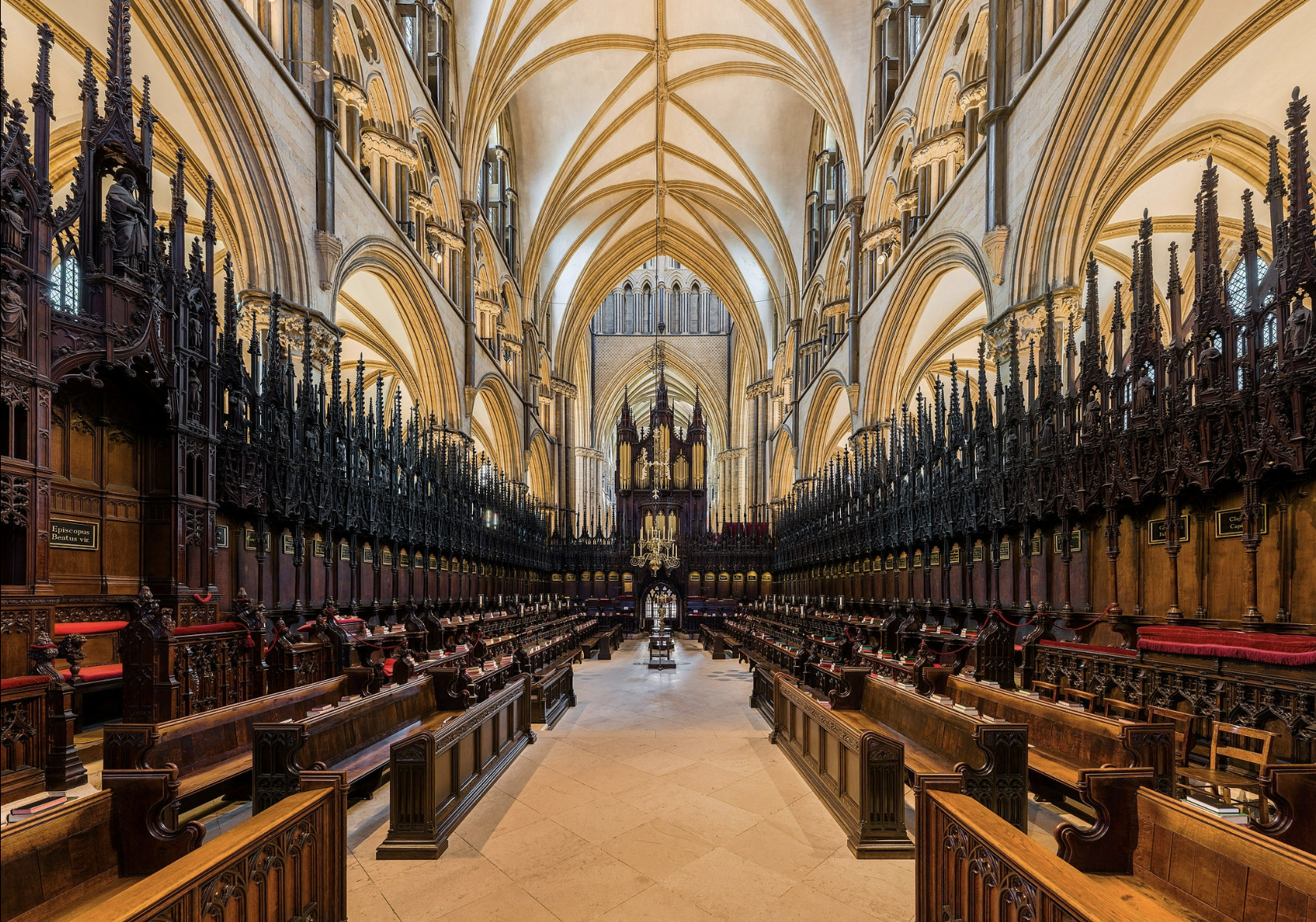
Lincoln Cathedral, view of St. Hugh’s choir with choir stalls (though make sure to examine the vault), 1191+
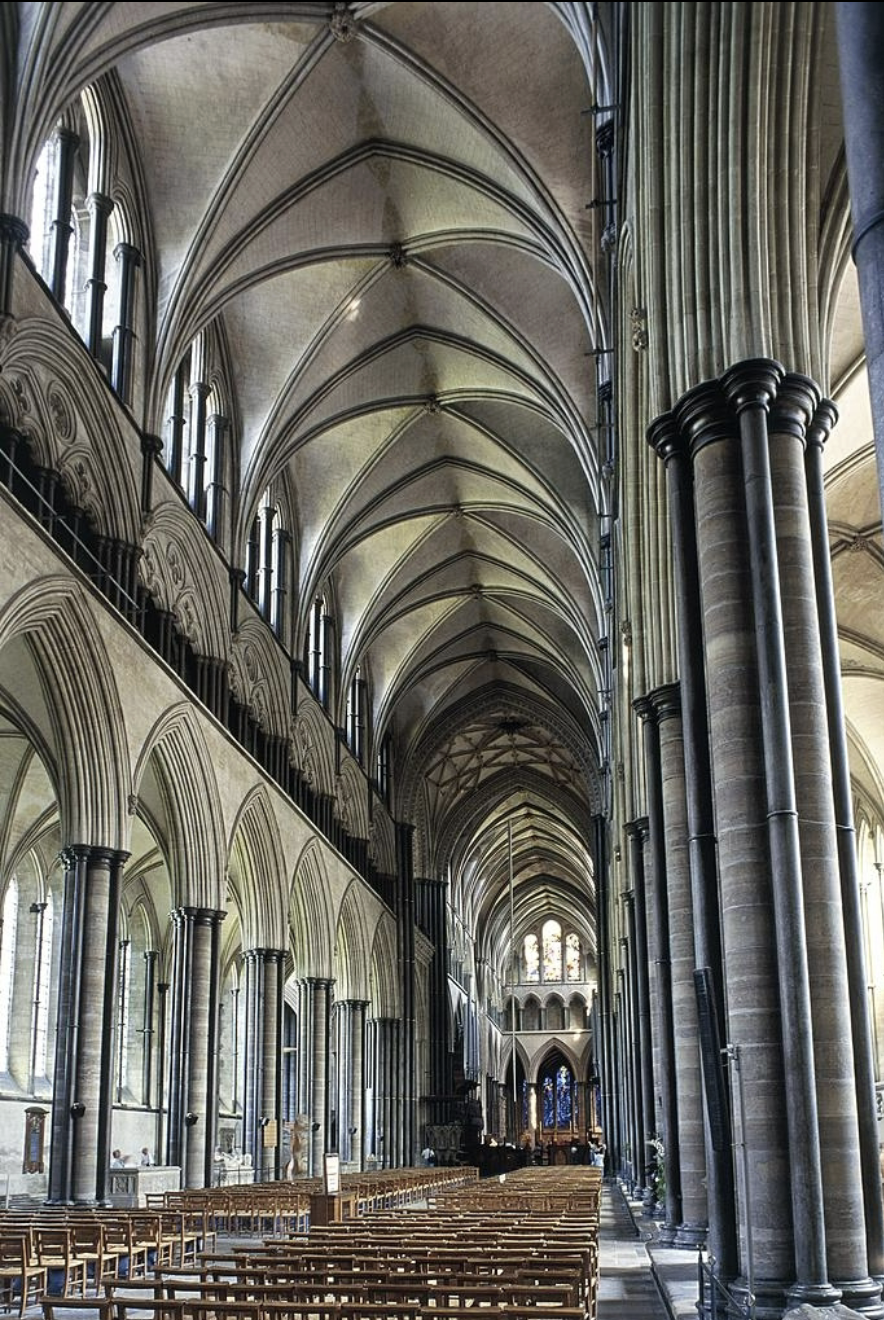
Salisbury Cathedral, view of nave, 1220-1258

Salisbury Cathedral, Trinity Chapel (Lady Chapel), 1220-1266
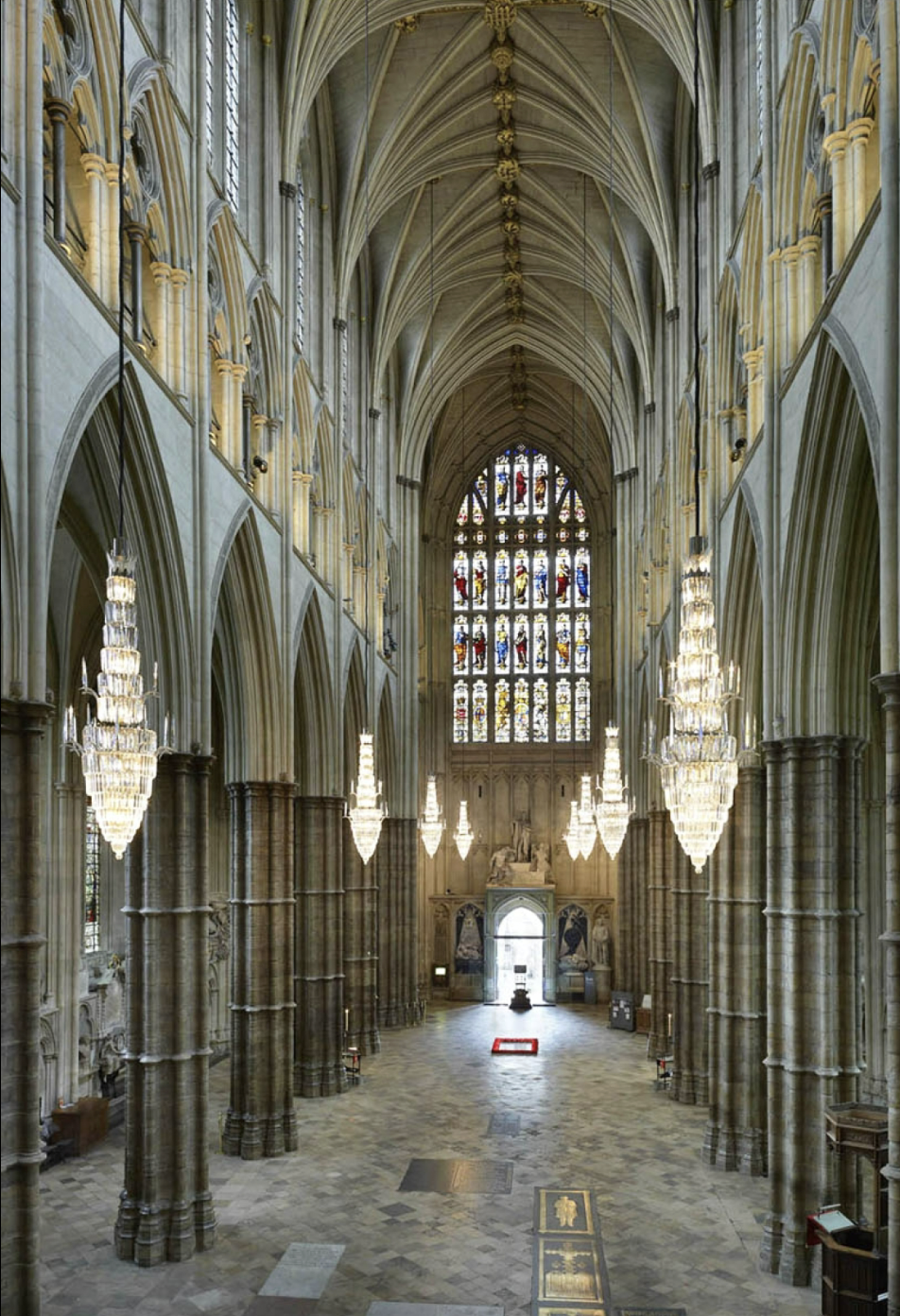
Westminster Abbey, view of nave, ca. 1250-1272

Westminster Abbey, Chapel of Henry VI (VII), 1503-1509,
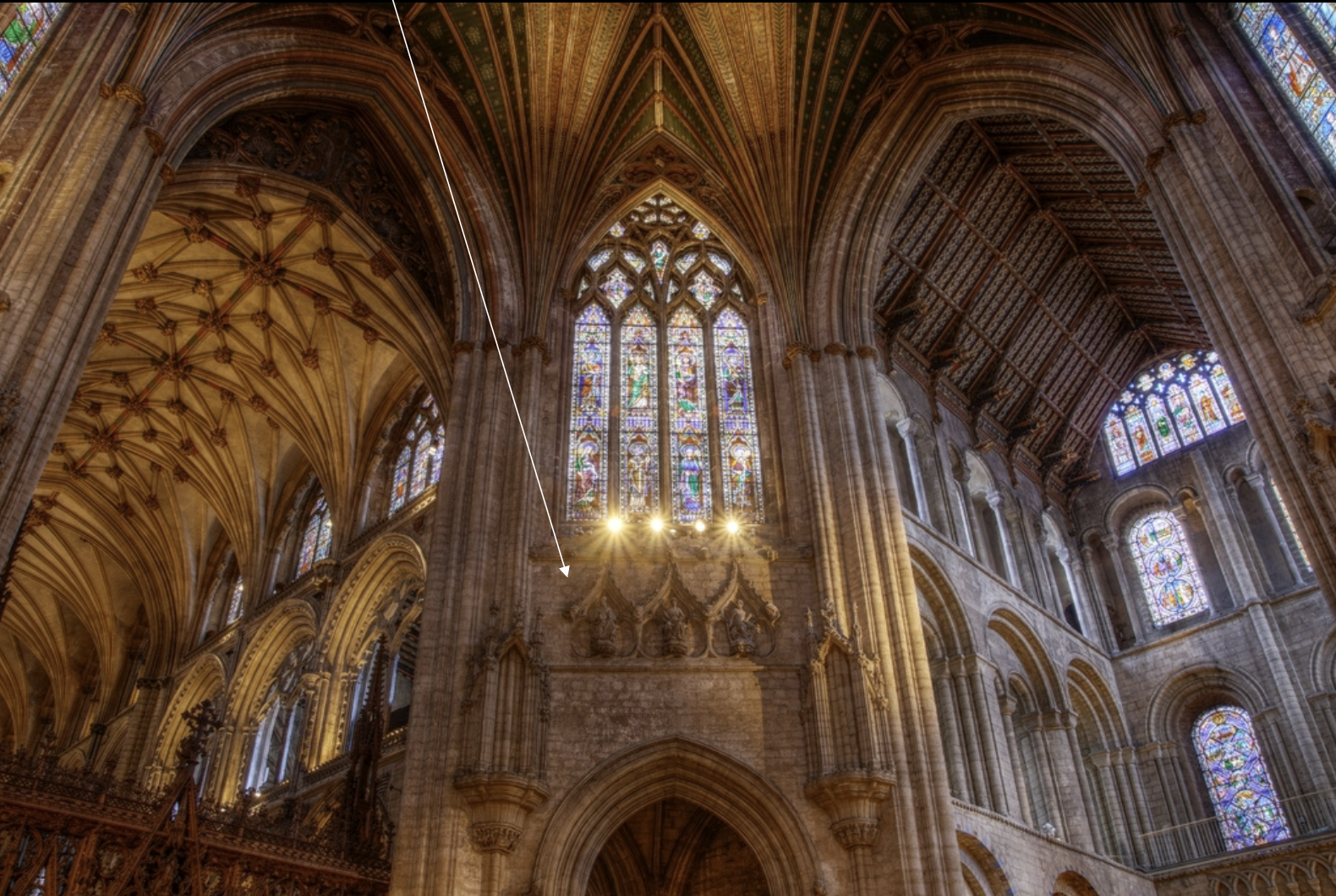
Ely Cathedral, views of Octagon and rebuilt west choir, 1322+
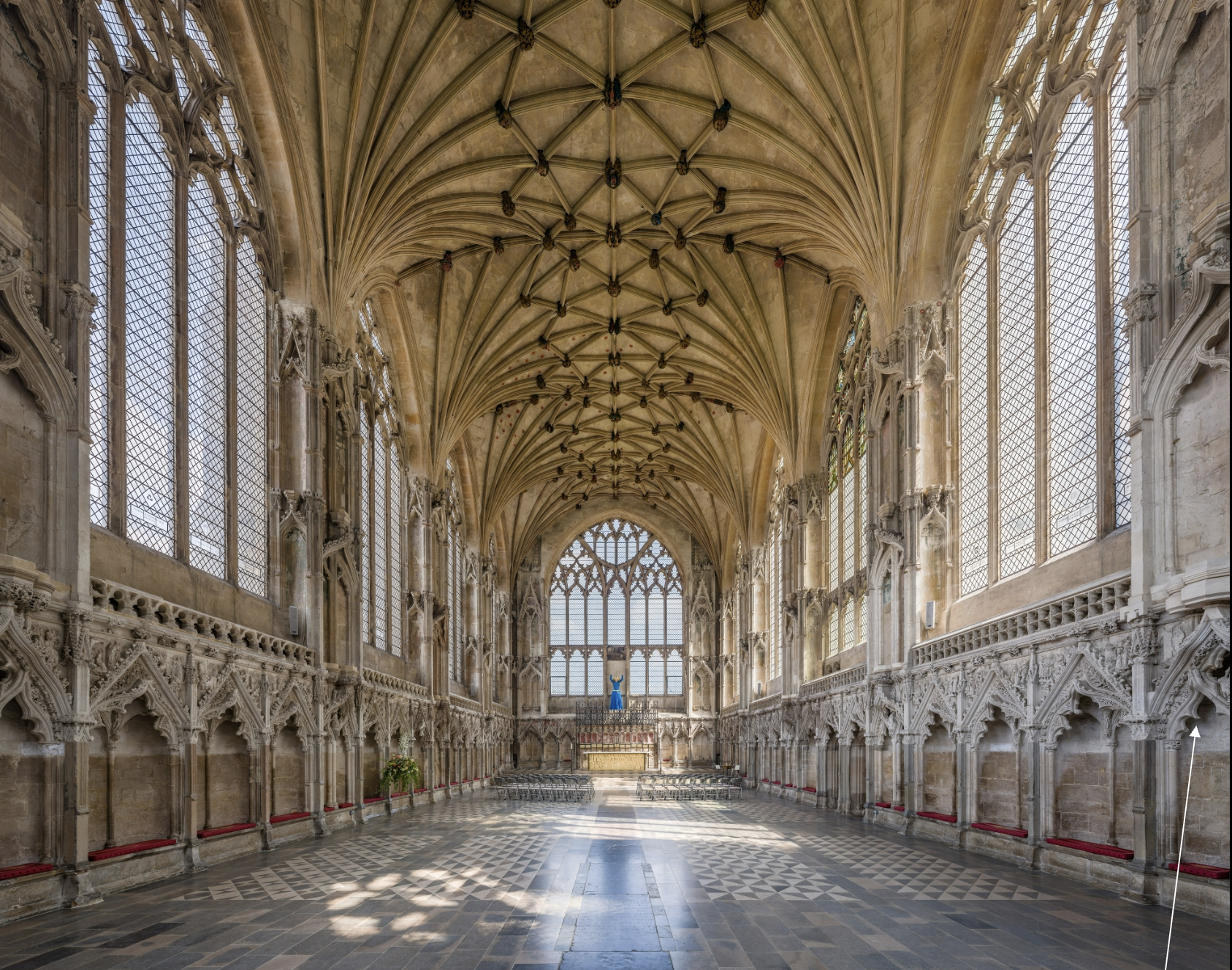
Ely Cathedral, Lady Chapel 1321-1345
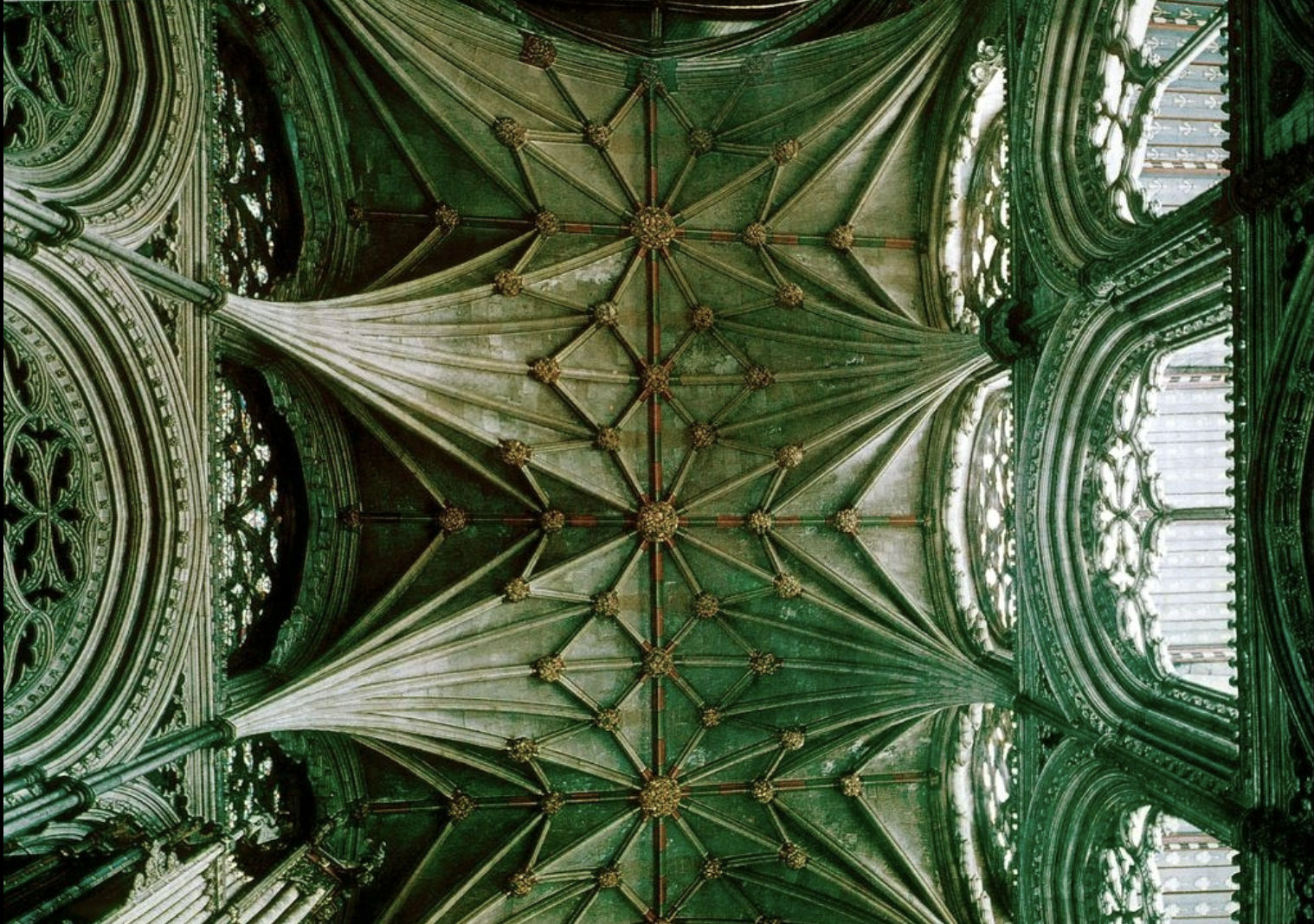
Ely Cathedral, views of Octagon and rebuilt west choir, 1322+ (view with choir stalls)

Gloucester Cathedral, choir, rebuilt/renovated ca. 1337+
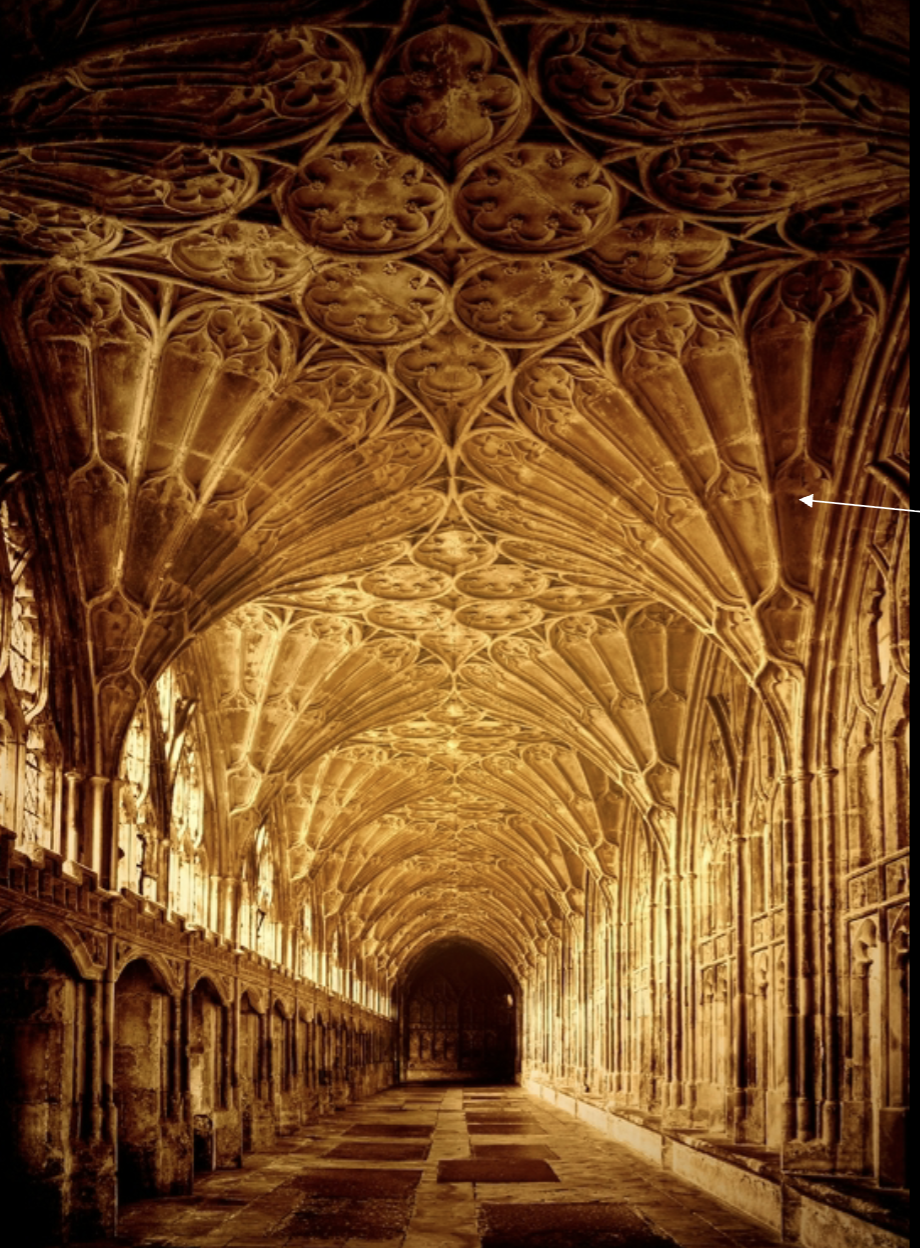
Gloucester Cathedral, cloister walkway, 1360+
Bar Tracery
tracery in windows made of stone pieces and cut to be the same, not for support (ex. Beasuvais, Saint Pierre)
Glazed triforium
stained glass in the triforium (ex. Saint Denis)
Dead weight loading
loading of the materials themselves, the weight of it
Crusade
church sponsored missions to conquer jerusalem starting in 1098
Contrapposto
bent leg, uneven shoulder and turned in space, used in scultputing figures, comes from the ancient world (ex. Reims jambs)
Cephalophore
saint holding their own head, martydrom, dies witnessing their beliefs (Saint Nicaise at Reims cathedral)
Attribute
Cellarer
person responsible for valuable beverages in the cellor (ex. Chartres)
Rayonnant
“radiating effect” of the stained glass, 1230s-1450, emphasis on huge stained glass windows with radiating patterns
Trefoil
3 leaf clover shape, formuli for tracery in stained glass, used in rayonnant period
Quatrefoil
4 leaf clover shape
King Louis IX
beloved king, very pious and prayed mutiple times a day collected relics for the (Paris, Sainte -Chapelle 1248), failed on crusade
Clerestory passage
a narrow passage that goes in front of the outer wall of the clerestory, double walled (ex. Canterbury choir)
Thomas Becket
King Henry II’s chancelor who became the archbishop of Canterbury Cathedral 1174, eventually murdered by the kings knights
William of Sens
architecture from france to handle canterbury cathedral
Stringcourse
horizontal line used as an architecture element, emphasizes a horizontal, working against a sense of verticallity (english feature, cathedral of saint andrew)
Strainer arches
filted supports that divide the interior into segments, support that is decorative (Saint andrew, tower that fell)
Tierceron
used to reinforce a groin or divide one bay from another, they are purely decorative
Ridge rib
runs down the length of the vault at its crowns (Lincoln choir)
Boss
scultpure or decorative element usually in the ceiling of vaults (Lincoln choir)
Old Sarum
the instuction manual for how church rituals were to be carried out, very elaborate ( cloister at wells built for serum use)
Choir stalls
usually a later addition so that the choir could have somehwere to sit 19th century (wells)
Lady Chapel
Designed for serum use, a dedicated space for services towards the virgin mary (english thing, salisbury, saint mary)
Minster
a monastery or abbey
Plantagenet
Eleanor Cross
monument of beloved queen, heavily decorated with gables, surface decor
Ogee Arch
double curving arch , shaped like an S, obtuse and acute (Ely, Trinity)
Lantern
an opening usually in a crossing that allows light into the space (ex. Trinity)
Liern
short rib that either doesnt connect to springing of the vault or ridge rib, addes as decroative feature (Ely, Trinity)
Fan vault
a vault that has a series of conoids (Gloucester) perpendicular style
Conoid
continously carving points and covered in patterns of tracery (Gloucester)
Chantry
a chapel that is endowed so mass’s can be said for an indivudal or a family (Chapel of Henry VI)
What were the economic and political challenges to building cathedrals and other gothic structures? How is the economic and political relationship between those who sponsored church building and those who lived around the churches manifested in art and architecture? You should include a discussion of Hansen, “Sculpture, Ritual, and Episcopal Identity,” in your answer.
How did royalty and the nobility influence the appearance of Gothic churches and their decoration? Make sure to talk about the findings of Weiss, “Architectural Symbolism,” and Wilson, “The English Response” in your answer.
How did French and English Gothic architecture of the twelfth and thirteenth centuries differ, and how was it similar? What direction did stylistic influence travel? Why did one society copy the other? Make sure to talk about the article by Wilson, “The English Response” in your answer.